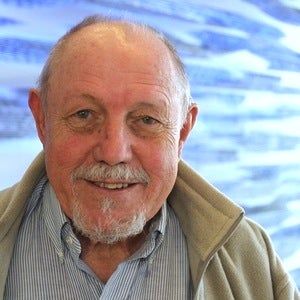Oceanographers from the University of Rhode Island will once again present their research and posters during an international Earth science meeting this month. Faculty, staff and students at the Graduate School of Oceanography are among the thousands of scientists attending the 50th annual gathering of the American Geophysical Union, or AGU, Dec. 11 through 15 […]
Continue reading "GSO scientists to present research at national meeting, Dec. 11-15"Tag: Marine Geology and Geophysics
GSO’s Matt Wei wins prestigious NSF early career grant
We all know our planet spins, but did you also know it is constantly changing. Earth’s outer crust moves in pieces over melted rock, coming together and spreading apart to reshape the geological landscape. Those interactions—called the theory of plate tectonics—can cause natural disasters, including earthquakes, which are especially destructive. It’s crucial, then, that scientists […]
Continue reading "GSO’s Matt Wei wins prestigious NSF early career grant"Jean-Guy Schilling
jgs@gso.uri.edu | 401-874-6627
Horn Building 204
URI’s Graduate School of Oceanography scientist returns from research project in Indian Ocean
URI’s Graduate School of Oceanography scientist examining microscopic organisms in Narragansett Bay to measure climate change
Climate Clues in Diatoms
A University of Rhode Island oceanographer is studying microscopic organisms at the bottom of Narragansett Bay that could help determine how climate change is changing the bay’s ecosystem. Rebecca Robinson’s research is on diatoms, single-celled organisms found in abundance in the oceans. Diatoms—a type of phytoplankton—are at the base of the food web, feeding everything […]
Continue reading "Climate Clues in Diatoms"Hurricanes and Tsunamis
Tropical cyclones (hurricanes) routinely invading our shores are of great concern to residents who live in coastal regions. Mathematical models incorporating ocean data along with atmospheric data developed by GSO scientists improve the reliability and accuracy of the hurricane prediction models used by NOAA’s National Hurricane Center and the Navy’s Joint Typhoon Warning Center. These […]
Continue reading "Hurricanes and Tsunamis"Deep Microbes
Recent discoveries by GSO biogeochemists in samples from Deep Sea Drilling Program (DSDP) cores taken from the Pacific Ocean have significant implications for the nature and global distribution of life in the sediments of the subseafloor. For example, estimates of Earth’s total living biomass are now 10-45 percent lower than previously thought, and the depth […]
Continue reading "Deep Microbes"Inside Earth
Earthquakes, explosions, pyroclastic flows, and tsunamis can result from oceanic volcanic activity, both from underwater and island volcanoes. Documenting these volcanic edifices and ash flows resulting from eruptions is important in mitigating the resulting hazards to nearby residents. Ocean explorers at GSO routinely discover and map volcanic regions and associated ash flows using Remotely Operated […]
Continue reading "Inside Earth"From Data Collection to Modeling
Modeling of fish populations and their trophic interactions is an essential element for defining targets for sustainable fisheries, and estimating benefits of rebuilding stocks. The effects of seasonal migrations of interacting fish species and population feeding habits are modeled by GSO fisheries biologists to better explore the consequences of different harvest strategies and changes in […]
Continue reading "From Data Collection to Modeling"
